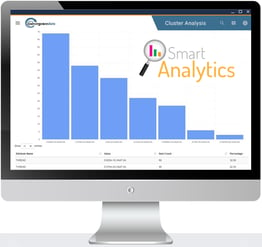2 Critical Product Analytics Your Company is Ignoring
When your company is under pressure to deliver new products, internal data can help you identify trends and make good decisions. Two of the most important data sets to review are your sales analytics and spend analytics.
But why exactly are analytics so important?
Imagine for a minute that you tell your teenager to change the oil in the family car. You remind him that he needs a new oil filter and 10W-30 oil. Your teenager goes off, begrudgingly, to change the oil. He looks around the garage and can’t find the oil he needs, and really doesn’t look to hard.
So instead of coming to you he decides to run down to the local store and buy 10W-30 oil, at $6.28 per quart. But when he gets home you meet him in the garage and you tell him that you just bought six quarts at the bulk store last week - for $3.25 a quart!
The problem is he didn’t see the oil in the garage because it wasn’t labeled “10W-30” – it said “Motor Oil.”
Everything he needed was already in the house, but he wasted time, gas, and $6.28 because of inadequate labeling.
In other words – bad data just eroded a little bit of your household budget. Now imagine that same problem playing out inside your company with hundreds, maybe thousands of parts and products. At this moment, you have identical parts procured from various sources and purchased at a variety of prices. To make matters worse, the same part from two different sources is in your system with different names and model numbers.
Your team needs ‘10W-30’, but when all they can find is “oil.” So they fill out a purchase order to buy “10W-30.” Again.
You probably don’t want to think about how much those arbitrary purchasing decisions are costing you.
Scrubbing that data and providing normalized attribute data to your parts offers multiple benefits. The right data will provide an eye-opening view into sales analytics, spend analytics, and aftermarket analytics.
Sales Analytics
Consistent, detailed product data is a prerequisite for reporting that will show which product configurations have the highest sales volumes. Or equally important, which products have the lowest sales volumes.

Notice we are not talking just about “products,” but “product configurations.” It’s pretty easy to know what the biggest selling products are. What matters, however, is knowing what particular characteristic make those products so attractive to your customers. The relevant characteristics (Attributes) go deeper than merely the color of an appliance. As you get more granular – which requires good data – you can invest more in the product lines that truly drive sales.
As you look into these trends that help drive sales, you need to identify the components and assemblies that make up these products, and the functions they provide. Some high-value, low-cost functions might excite your customers while there are low-value, high-cost functions that slow sales.
Drilling down into that level of reporting starts with a consistent and comprehensive data set for all your products.
Spend Analytics
Beyond sales analytics, you can find additional insight by looking at your purchasing analytics. Much like the oil analogy we used earlier, companies often lose money when purchasing similar items from various vendors at entirely different pricing occurs. By putting yourself in a position to analyze part and component purchases, you can identify critical trends. Part characteristic data, keywords and attributes, are essential to that purchasing analysis.
Spend information may also expose why product costs are so high and why competitors beat you on price and value. Typically, most companies that buy commodity items, such as motors, don’t know which motor purchases are most common in their organization, which are the least common and what characteristics differentiate the groups. The analytics can help companies promote the use of standard purchased parts, which cost less, come from preferred suppliers, and typically are more reliable. Conversely, the less common motors will be more expensive and may come from lesser known suppliers with an unknown reliability history.
Stop ignoring these vital statistics. An easily accessible dashboard of Sales and Spend Analytics of part and product data is vital to staying competitive in the marketplace. A product that has competitive pricing and all the features customers desire will enable your business to thrive.
# # #

